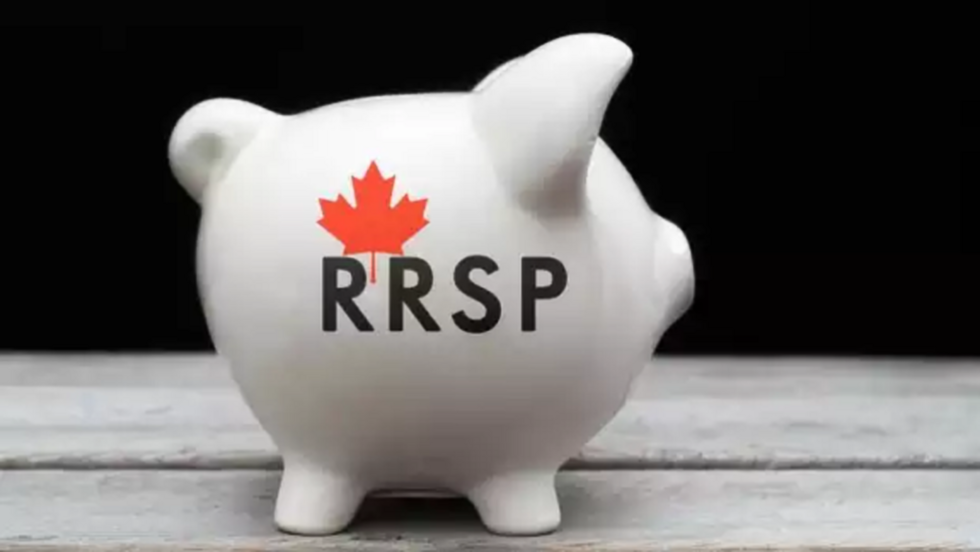Simple US Tax Guide for Canadian Retirement Plans

Tax and retirement planning is a very complex process that often involves accountants, finance professionals, and lawyers. But, cross-border issues make this even more complex, especially when the US-Canada tax treaty is involved and how it treats investment plans like the TFSA, RRSP, and some pensions.
Below, we’ll discuss some recent developments surrounding these issues in international tax law, plus provide guidance in retirement planning, which is a grey area.
Registered Retirement Savings Plan (RRSP)
RRSPs are savings plans for retirement that are registered in Canada with the government. RRSP contributions are allowed by both you and your spouse. The 31st of December in the year you turn age 71 is the final year you can make a contribution to your RRSP. The same age restrictions apply to your spouse - you can contribute to their RRSP until the conclusion of the calendar year in which they turn 71.
One benefit of using RRSPs is that contributions can reduce your income tax in the contribution year. Income from an RRSP is not usually taxable while the funds stay in the RRSP. But, payments taken from the RRSP are taxable at your regular tax rate.
When a withdrawal is made, the bank or investment company with the plan withholds taxes for anyone who is a Canadian resident.
- Up to CAD 5,000 - 10% (Quebec - 5%)
- Between CAD 5,000 and CAD 15,000 - 20% (Quebec - 10%)
- Over CAD 15,000 - 30% (Quebec - 15%)
For people who are not Canadian residents, lump sum distributions are withheld at 25%, and periodic payments are withheld at 15%.
US Requirements
Until recently, the Internal Revenue Service required a taxpayer to file Form 8891 reporting their contributions, distributions, and undistributed earnings from RRIFs and RRSPs. Recent changes have removed that requirement, and taxpayers will be automatically assumed to have chosen the treaty option for deferral.
Account distributions are required to be reported using a taxpayer’s US tax return, just as they are on a Canadian income tax return.
Note that this change doesn’t affect other United States reporting requirements, if any, for RRIFs and RRSPs. As an example, you might be required to file a yearly Report of Foreign Bank and Financial Accounts (FBAR), along with Form 8938 - Statement of Foreign Financial Assets, when your plan value exceeds certain thresholds.
RRIFs - Registered Retirement Income Funds
RRSPs must be converted into an income option for retirement, like a RRIF, no later than the 31st of December in the year you reach age 71. You can convert an RRSP into an RRIF any time prior to that date. RRIFs and RRSPs are similar in many respects; but, after an RRSP gets converted into an RRIF you cannot make any additional contributions, and you must take a minimum annual withdrawal.
The minimum required withdrawal is calculated at the start of the year using a calculation taking into consideration your age, as well as the value of assets in your RRSP as of the 31st of December of the prior year.
Payments from RRIFs are considered to be taxable income during the year the money is withdrawn, taxed at the taxpayer’s current rate. Withdrawals can be made any time you want, and you can always take out more than the required minimum.
Withdrawals from an RRIF have taxes withheld at identical withholding rates as withdrawals from an RRSP.
US Requirements
US tax laws and regulations treat RRIFs the same as RRSPs, so distributions are required to be reported using US tax returns.
CPP - the Canada Pension Plan
The CPP is the Canadian version of United States Social Security. All working Canadians over the age of 18 must contribute to the CPP at a rate of 4.95% (based on gross income from employment) over CAD 3,500 - up to the maximum contribution (CAD 2,480). As in the US, employers match employee contributions. Those who are self-employed must pay the employer and the employee portion of the CPP tax. A taxpayer is able to apply for CPP benefits starting at age 60, until they reach age 70.
The US and Canada have an agreement concerning Social Security. If you made contributions to the systems in both countries, you might qualify for benefits from both countries. In some circumstances, a taxpayer can choose to transfer payments made into one country’s system into the other country’s system.
Canada considers CPP payments to be taxable income, so the particular tax rate depends on all of the taxpayer’s other income that year. If a taxpayer has income from additional sources, they can choose to have income tax withheld from their CPP payment each month.
United States Social Security payments received by residents of Canada are only taxed in Canada. Residents of Canada who receive United States Social Security payments must claim 85% of the benefits when they calculate their income in Canada. The entirety of the benefits get reported when filling out the return for Canada, but the 15% amount that is not taxed gets treated like a deduction when calculating the taxable income on the return.
US Requirements
The US - Canadian tax treaty causes payments from certain Canadian retirement plans to receive special treatment.
The specific way the income gets taxed is dependent on the person’s residency status (United States, Canada, or both). The special tax provisions apply to payments from the Quebec Pension Plan (QPP), Old Age Security (OAS), and the Canada Pension Plan (CPP), but not from annuities or private pensions.
American residents who receive these benefits get taxed only by the US. The benefits are treated like United States Social Security payments for tax reasons. Payments from the CPP get reported on the taxpayer’s Forms 1040 or 1040A in the same place that benefits from United States Social Security would normally be reported.
Canadian residents pay taxes on these benefits only to Canada.
OAS - Old Age Security
OAS is a pension with monthly payments that is available to people age 65 or older who have met the requirements for residency and legal status in Canada. Different than the CPP, a person can receive OAS payments even if they have never been employed.
There is a provision in OAS that requires a person to pay back part of their OAS if their net income exceeds CAD 71,592 (as of 2014 levels). The payback rate is 15% of income (net). After income reaches CAD 116,103, OAS benefits are eliminated. Payments from OAS are taxable income, with no tax deducted unless a taxpayer requests it.
US Requirements
The Canadian - US tax treaty considers OAS similarly to CPP.
TFSA - Tax Free Savings Account
TFSAs are flexible, registered accounts that allow Canadians to contribute after-tax money, and earn income tax free. As of 2013, any Canadian resident at least age 18 can save a maximum of CAD 5,500 each year in a TFSA. TFSAs can hold mutual funds, certain bonds and stocks, GICs, and cash.
The drawback to a TFSA is that, although gains are not taxed, contributions are with after-tax money and cannot be deducted from income for tax purposes like RRSP contributions can. If a taxpayer does not contribute the maximum in the present year, they can carry forward unused contribution allowances. Withdrawals are allowed to be re-contributed in the future, but re-contributing the full amount in a single year could result in over-contributions that are subject to penalties.
For the 2015 tax year, CAD 36,500 is the total contribution for TFSAs.
US Requirements
The IRS considers mutual funds from Canada held inside a TFSA to be an investment in a PFIC, so they have to be reported using Form 8621 if the taxpayer is a US citizen.
TFSAs might also be considered a foreign grantor trust by the United States. A US citizen with foreign grantor trusts must file Form 3520 and Form 3520A.
Finally, if the appropriate thresholds are reached, the TFSA must be declared on an FBAR, along with Form 8938, in order to meet the requirements of the FATCA - Foreign Account Tax Compliance Act. Usually, it is best for United States citizens to not hold TFSAs since the costs of tax reporting and compliance usually exceed any benefits.
In Conclusion
When planning for retirement, one must factor in issues with taxes in multiple countries, especially when a US citizen plans to work in Canada until their retirement.
Currently, the best choice of registered investments is the RRSP. The reporting requirements are clearly defined in the treaty between the US and Canada. This means that there are tax savings, but not excessive reporting requirements like there are with a TFSA.
As of now, it is not clear what position the Internal Revenue Service will take regarding TFSAs, but, as these accounts grow in value, it is more likely the IRS will develop a formal reporting method. Until that happens, it is recommended that US taxpayers not invest using TFSA accounts since the cost involved in complying with current tax codes exceeds any benefit.
The article has covered a few guidelines associated with current rules, but this is a constantly changing topic, as both the US and Canadian governments attempt to provide incentives for saving and investing. When planning for your retirement, make sure to keep current with tax laws so that your hard earned savings stay with you, rather than the government.



